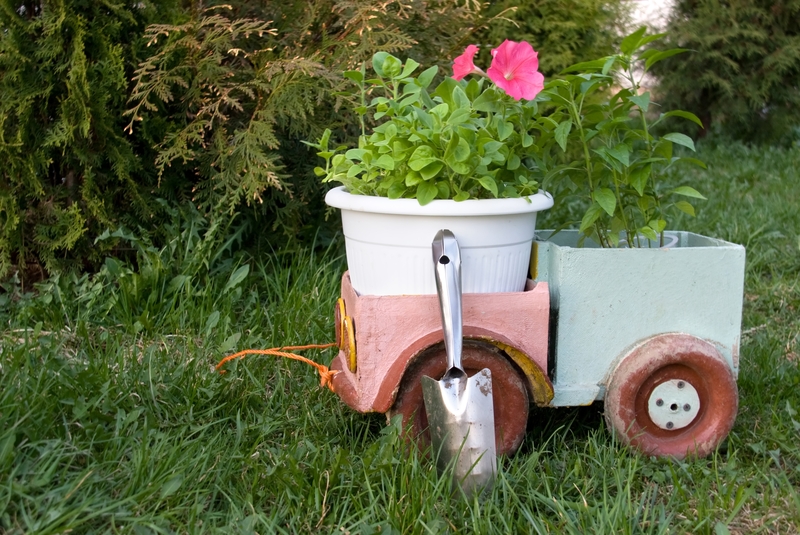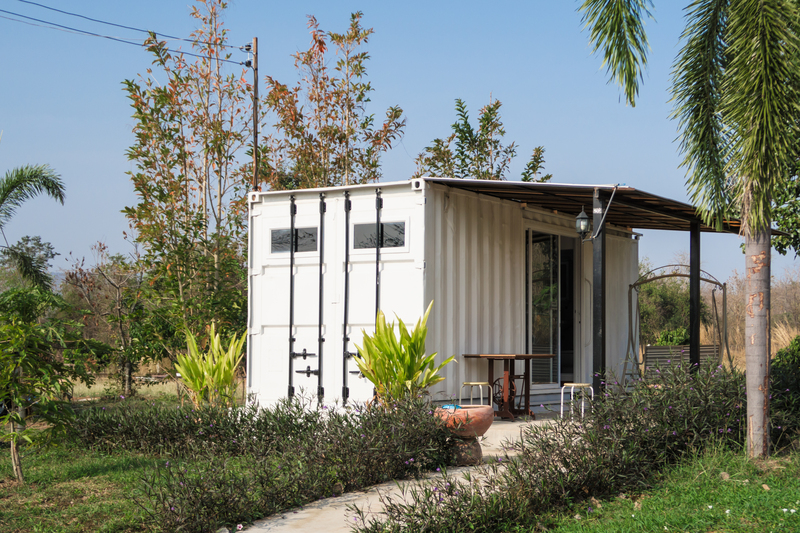Cardboard Disposal: Reducing Environmental Impact of Packaging
In today's rapidly evolving retail and e-commerce landscape, cardboard packaging has become ubiquitous. While it offers many advantages--such as being lightweight, sturdy, and cost-effective--it also brings mounting environmental challenges if not disposed of responsibly. This comprehensive guide explores effective methods for cardboard disposal, highlights its environmental consequences, and provides actionable strategies to reduce the ecological footprint of packaging.
Understanding Cardboard as a Packaging Material
Cardboard, commonly referred to as corrugated fiberboard, is a type of paperboard made from pulp derived from trees or recycled paper. Its extensive use--ranging from shipping boxes to food packaging--makes it an integral element of modern supply chains. However, improper cardboard waste disposal can have significant consequences on the environment.
- Biodegradable: Cardboard is inherently compostable and can break down in the environment under optimal conditions.
- Recyclable: It can be reprocessed several times without significant quality loss, making it one of the most recyclable materials in the packaging industry.
- Resource-dependent: Virgin cardboard production still relies heavily on logging, contributing to deforestation and energy consumption.

The Environmental Impact of Cardboard Waste
Cardboard packaging waste poses several environmental challenges, despite its reputation as an eco-friendly material:
Landfill Overload
When cardboard is not recycled, it ends up in landfills. Surprisingly, packaging materials--especially cardboard and paper products--constitute a large proportion of municipal solid waste. Cardboard in landfills takes years to decompose and, in the process, emits methane, a potent greenhouse gas.
Deforestation and Raw Material Consumption
The manufacturing of virgin cardboard involves harvesting trees, causing habitat loss and reducing biodiversity. The demand for paper and cardboard packaging continues to rise, putting additional pressure on forest ecosystems globally.
Energy and Water Usage
Both recycling and producing cardboard require water and energy. Virgin cardboard production consumes substantially more natural resources compared to recycling--but recycling itself is not without an ecological footprint.
Pollution from Improper Cardboard Disposal
When cardboard is contaminated with oil, food, or chemicals, it becomes non-recyclable and can leach toxins if buried. Burning cardboard, a misguided form of disposal, releases pollutants and dangerous particulates into the atmosphere.
Best Practices for Cardboard Disposal
Adopting sustainable approaches to cardboard packaging disposal is essential for minimizing the negative environmental consequences. Here are key methods to ensure responsible handling of cardboard waste:
1. Reusing Before Disposing
- Repurpose boxes: Use them for storage, crafts, school projects, or moving before considering disposal.
- Share or donate: Give sturdy boxes to friends, local businesses, or through online platforms like Freecycle.
2. Proper Cardboard Recycling Techniques
- Flatten boxes: Before placing them in the recycling bin, break down boxes to save space and ensure efficient processing.
- Remove contaminants: Take out any plastic, foam, or non-cardboard materials and avoid recycling soiled or greasy cardboard, which can clog recycling machinery.
- Follow local recycling guidelines: Communities may have specific requirements; always check for curbside pickup instructions or nearby drop-off centers.
3. Composting Cardboard
- Compostable cardboard: Brown, non-coated, and unprinted cardboard makes an excellent addition to home compost bins or municipal composting programs as a carbon-rich ("brown") material.
- Shred for faster breakdown: Tear large sheets or boxes into smaller pieces before composting to accelerate decomposition.
4. Upcycling and Creative Uses
- Art and DIY Projects: From children's playhouses to wall art, cardboard offers endless crafting possibilities.
- Gardening: Use sheets as mulch or weed barriers in garden beds. Cardboard packaging breaks down over time and nourishes the soil.
Innovative Solutions: Reducing the Need for Cardboard Disposal
A long-term solution to the environmental challenges of cardboard waste is minimizing demand altogether. Here are some innovative approaches brands, businesses, and consumers can implement:
Adopting Minimalist Packaging
- Right-sizing boxes: Opt for correctly sized containers to reduce material usage and eliminate the need for excessive void fill.
- Lightweight designs: Use thinner yet sturdy grades of cardboard to decrease weight and waste.
- Multi-use packaging: Design packaging with secondary functions, encouraging consumers to reuse before discarding.
Switching to Sustainable Alternatives
- Molded pulp and biodegradable options: These are increasingly viable for replacing traditional cardboard in some applications.
- Reusable packaging: Initiatives such as reusable shipping containers, totes, or deposit-return systems keep packaging circulating for years.
Encouraging Circular Economy Practices
- Take-back programs: Businesses can incentivize customers to return used cardboard packaging for recycling or reuse.
- Supplier collaboration: Work with material suppliers and logistics partners to optimize the lifecycle and recyclability of packaging materials.
How Consumers Can Reduce the Environmental Impact of Cardboard Packaging
Reducing the environmental footprint of cardboard packaging waste isn't just the responsibility of manufacturers or policymakers. As consumers, we can all play a substantial role through conscious choices and informed actions:
Sustainable Shopping Habits
- Buy in bulk: Purchasing in larger quantities reduces packaging per item.
- Select brands with eco-friendly packaging: Seek out companies with sustainability commitments and minimal, recyclable packaging.
- Consolidate shipments: Where possible, combine multiple online orders to reduce box usage and overall cardboard waste.
Proper Waste Segregation
- Educate your household: Teach everyone how to prep and sort cardboard for recycling.
- Watch for contamination: Avoid recycling oily, wet, or food-soiled cardboard, as they can disrupt recycling streams and should instead be composted (if suitable) or disposed of as waste.
Community Engagement
- Support local recycling initiatives: Participate in or advocate for expanded curbside recycling and community collection events.
- Spread awareness: Share cardboard disposal best practices within your network--both in-person and on social media.
The Business Case for Responsible Cardboard Disposal and Packaging Reduction
For businesses, prioritizing sustainable cardboard packaging disposal and reducing material use isn't just about environmental stewardship. It can directly benefit the bottom line, brand image, and regulatory compliance.
Cost Savings
- Reduced material expenses: Using less cardboard or eliminating it entirely cuts both procurement and waste management costs.
- Lower transportation costs: Lighter, smaller packages decrease shipping fees and fuel consumption.
Improved Brand Reputation
- Consumer preference: Shoppers increasingly reward businesses that demonstrate environmental responsibility.
- Stand out in the market: Sustainable practices can differentiate products, attract conscientious buyers, and nurture loyalty.
Risk Mitigation and Legal Compliance
- Stay ahead of regulations: Many regions are tightening waste disposal and packaging standards; proactive businesses avoid fines and disruptions.
- Meet corporate sustainability targets: Cutting cardboard waste supports broader Environmental, Social, and Governance (ESG) goals.
Supply Chain Optimization
- Streamlined logistics: Less packaging means simpler, more efficient supply chains and fewer resources consumed at every step.
- Partner innovation: Collaborate with suppliers to build packaging solutions that are both effective and environmentally friendly.
Common Challenges in Cardboard Waste Disposal
Despite increased awareness, several hurdles persist in achieving optimal cardboard packaging disposal:
- Contamination: Food, liquid, and other impurities render cardboard unrecyclable, diverting it to landfill.
- Consumer confusion: Not all consumers know which types of cardboard are recyclable or how to prepare them for collection.
- Lack of facilities: Some areas still lack convenient, accessible recycling infrastructure for cardboard waste.
- Economic fluctuations: The market value for recycled cardboard fluctuates, impacting the viability of recycling programs.

What's Next for Cardboard Packaging and Disposal?
As global pressure mounts to address packaging waste, the future of cardboard disposal will rely increasingly on emerging technologies, smarter policies, and consumer education.
Technology and Innovation
- Automated sorting: Advanced optical sorting and AI-powered recycling facilities can better separate clean cardboard from contaminated materials.
- Biodegradable coatings: New materials are making traditionally unrecyclable coated cardboards compostable or recyclable.
Legislative changes
- Extended producer responsibility (EPR): Laws requiring manufacturers to manage the entire lifecycle of their packaging are gaining traction worldwide.
- Waste reduction targets: Governments are setting ambitious goals to minimize landfill waste, pushing both industry and consumers to adapt.
Education and Awareness
- Public campaigns: Increasing awareness about cardboard disposal techniques and best practices encourages greater participation in recycling programs.
- Business-led initiatives: Companies are educating customers on how to responsibly manage and dispose of packaging.
Conclusion: Moving Toward a Greener Packaging Future
The journey toward more sustainable cardboard disposal is a shared responsibility. By prioritizing recycling, reusing, composting, and reducing our reliance on single-use packaging, we can significantly diminish the environmental impact of cardboard waste. Whether you are a business leader, policy maker, or conscientious consumer, your choices today help shape a cleaner, greener future for all.
Key Takeaways:
- Always recycle or compost clean cardboard packaging when possible.
- Prevent contamination to maximize recycling potential.
- Support brands and policies that prioritize sustainable packaging and responsible disposal.
- Embrace creative reuse and upcycling of cardboard materials.
By championing better cardboard packaging disposal practices and adopting innovative packaging solutions, we all contribute to reducing the global environmental impact of packaging--one box at a time.